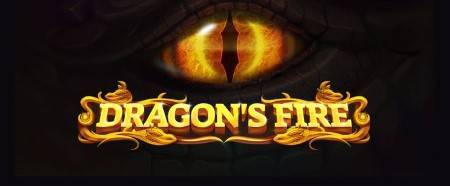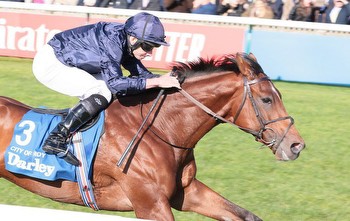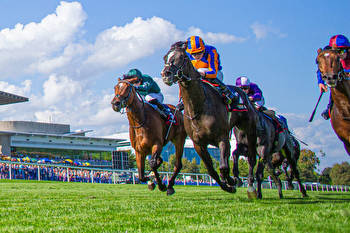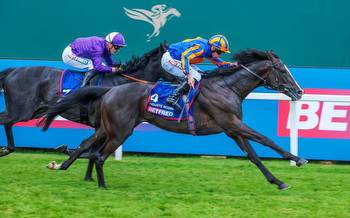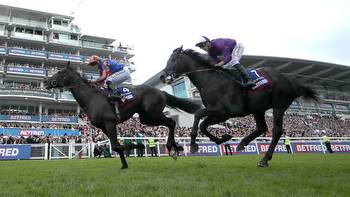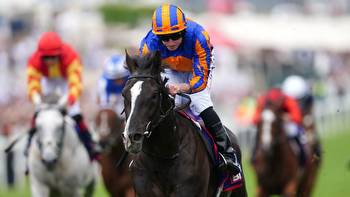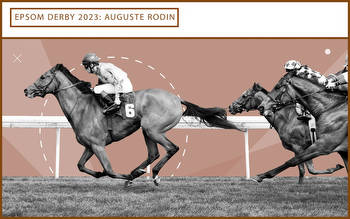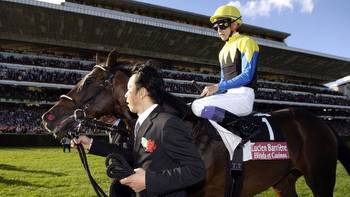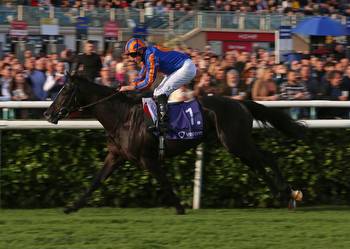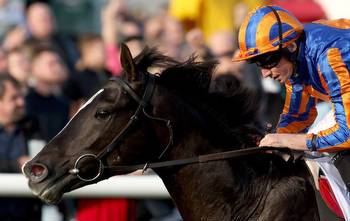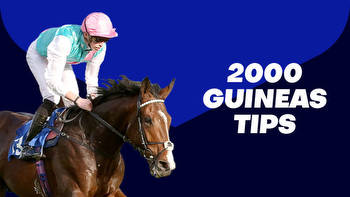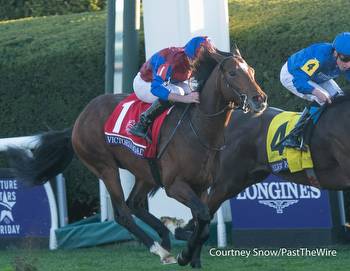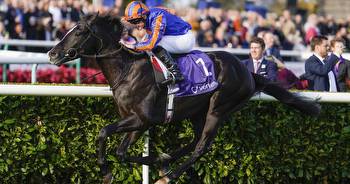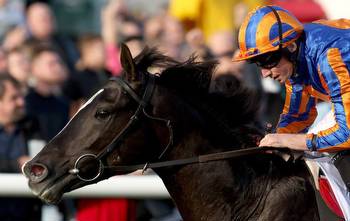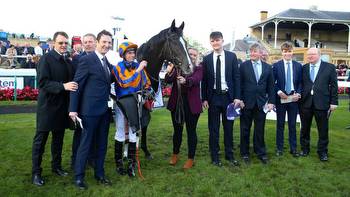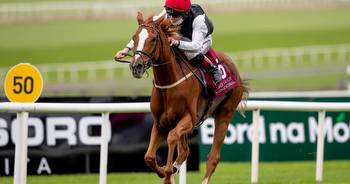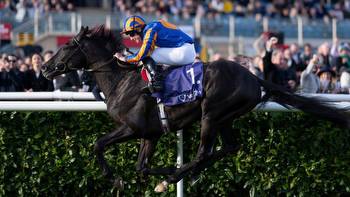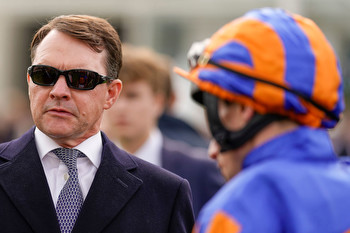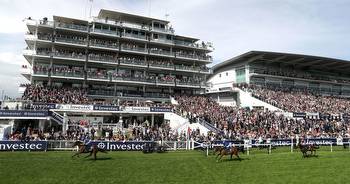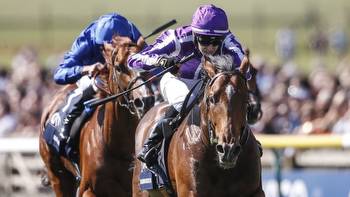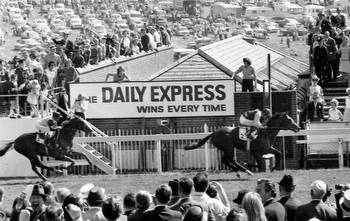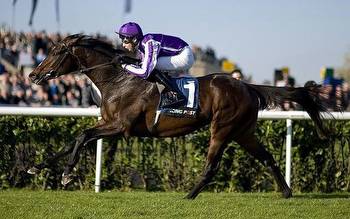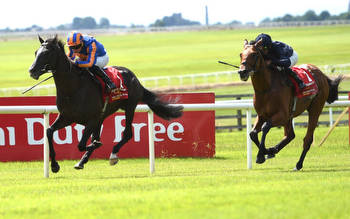Can Auguste Rodin become the first Triple Crown winner for more than 50 years?
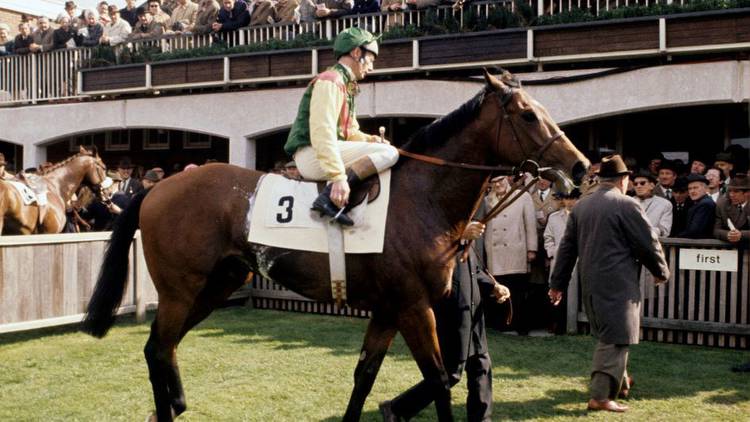
There has apparently been at least one alleged possible sighting of the Loch Ness Monster this year. Though as something which may, or may not, have been Nessie was caught on webcam footage rather than being reported by an eyewitness, a recent change to the rules means that it can’t be logged as an entry in the ‘Official Loch Ness Monster Sightings Register’. Such a thing does exist, which is more than can be said with any certainty about the monster itself who remains as elusive as ever. But what about that other seemingly mythical creature, the Triple Crown winner? Will 2023 be the year when it too resurfaces?
There’s a statue of the last colt to complete the English Triple Crown, Nijinsky, winner of the 2000 Guineas, Derby and St Leger in 1970, which stands at the entrance to Ballydoyle where he was trained by Vincent O’Brien. Nijinsky became the fifteenth colt to win the three classics open to him – Oh So Sharp was the last to win the fillies’ equivalent in 1985 – but he was only the second to achieve that feat in the last 100 years after Bahram in 1935. The Triple Crown was once accomplished much more regularly – four colts won it in the same decade, the 1890s, for example, but racing and breeding have changed a lot since the end of the nineteenth century.
With sprinters and milers accounting for much of the stallion population, specialisation nowadays means that fewer horses are bred to be versatile enough to see them through the complete range of the classic programme. From a commercial point of view, the 2000 Guineas, once the least important of the three colts’ classics, has become the stallion-making race, whereas a colt that wins the St Leger nowadays is almost always destined for, or consigned to, a career siring jumpers instead. The classics are no longer the be-all and end-all for the top three-year-olds that they used to be, either, with valuable all-aged middle-distance races such as the King George, Juddmonte International, Irish Champion Stakes and Arc offering tempting alternatives to the more traditional programme.
Nashwan in 1989 and Sea The Stars 20 years later were the first colts after Nijinsky to win both the first two legs of the Triple Crown but neither of those were pointed at the St Leger. Nashwan, winner of the Eclipse and King George after the Derby, was controversially aimed at the Arc instead in the autumn, but never contested it after being beaten in the Prix Niel beforehand, but there was no such outcry about the campaign Sea The Stars completed after his classic victories, with further successes in the Eclipse, International, Irish Champion Stakes and Arc. Nijinsky won the Irish Derby and the King George in between Epsom and Doncaster.
But the notion of the Triple Crown isn’t quite dead and buried, at least not at Nijinsky’s former home where another Triple Crown winner would almost certainly warrant his own statue. Auguste Rodin (whose namesake knew a thing or two about statues himself) was earmarked by Aidan O’Brien as a potential Triple Crown contender when speaking at a press morning at Ballydoyle in March:
‘If we have a horse who could do that, he would definitely be the one. You would imagine he would have no bother stretching out to a mile and a quarter and a mile and a half. He’s that type of horse. He is the type that could start in the Guineas and stretch out in trip after that.’
Auguste Rodin, now into 8/1 with Paddy Power to complete the Triple Crown, took his trainer’s record number of winners in the Futurity Trophy to 11 last October. Among O’Brien’s previous winners of the Doncaster Group 1 are several colts who have gone on to win the 2000 Guineas, Derby or St Leger, most notably Camelot in 2011, the only colt since Nijinsky to have lined up back at Doncaster the following year with a chance of completing the Triple Crown.
Coolmore are more aware than most of the commercial considerations when it comes to campaigning the colts that become their future stallions. But when it came to Camelot’s three-year-old season, that didn’t preclude them from taking up the sporting challenge of a Triple Crown bid. Asked about going on to the St Leger after Camelot had added the Derby to his 2000 Guineas win, John Magnier, Coolmore supremo and son-in-law of Nijinsky’s trainer, admitted ‘If you had asked me 30 years ago, I would have looked the other way but these things mean more as you get older.’
Magnier is now 75, and while the Derby remains a hugely important race in its own right for the Coolmore partners, there is clearly a big difference between Auguste Rodin becoming potentially ‘just another Derby winner’ to add to the nine they’ve already owned, or earning a greater place in racing history by going on to become the first Triple Crown winner for more than 50 years.
Camelot was rated 128 by Timeform as a three-year-old, making him a good 2000 Guineas/Derby winner but not an outstanding one, and certainly not as good a three-year-old as Nijinsky (138), Nashwan (135) or Sea The Stars (140). But he did stand out among his own contemporaries in what was a substandard crop of classic colts. By stamina influence Montjeu, on paper the 2000 Guineas was potentially Camelot’s greatest challenge of the three classics but with unseasonably soft ground for Newmarket in early-May, it proved a sufficient test for Camelot to justify favouritism at odds of 15/8 against an ordinary field by classic standards.
Proof that the classic generation lacked strength in depth that season came when Camelot, sent off at 8/13, had just eight rivals to beat at Epsom in the smallest Derby field for more than a 100 years. He duly won in emphatic fashion, by five lengths, and after landing the odds again in the Irish Derby, all roads led to the St Leger where he started at 2/5 to put his name in the history books in front of a crowd of 30,877.
Having leaped the gap between a mile and a mile and a half with ease between his first two classics, it was surely asking a lot less of Camelot, who stood out on form, to take the smaller step up to the St Leger trip. But his trainer was taking nothing for granted beforehand, believing him to have ‘mile/mile and a quarter traits, rather than mile and a half/mile and three quarters traits’ and saying that ‘as a Guineas winner, he is going to be way beyond his comfort zone’.
Maybe O’Brien had Camelot’s future stallion career in his thoughts in downplaying Camelot as being a staying type, but the trainer’s circumspect view was justified by the statistics. More Derby winners had failed in the St Leger than had won it in the preceding century and a half, while more odds-on favourites had been beaten in the race in the last 50 years than had been successful. Shergar was perhaps the best known of those in both categories. Among the odds-on favourites who had been successful was Reference Point in 1987; not only does he remain the only Derby winner since Nijinsky to have won the St Leger as well, he’d also won the Futurity Trophy at two, though surgery for sinus problems had ruled him out of a 2000 Guineas, and therefore Triple Crown, bid the following spring.
But Camelot became the seventh odds-on shot turned over in the St Leger in 50 years, having to switch to begin his run and then hanging fire briefly before closing only steadily to reduce the deficit to three-quarters of a length at the line on winner Encke who had burst nearly three lengths clear entering the final furlong. Defeat in the Arc three weeks later dented Camelot’s reputation further and keeping him in training at four failed to restore it as it only brought him success at Group 3 level in the Mooresbridge Stakes. As for his St Leger conqueror, Encke’s status as a classic winner became tarnished too, for very different reasons, when his trainer Mahmood Al Zarooni was found guilty the following spring of having used banned anabolic steroids on some of his string.
Ballydoyle’s main Triple Crown hope since Camelot was Saxon Warrior, he too ending his two-year-old season unbeaten by winning the Futurity Trophy, in 2017. He returned at three at Newmarket, with O’Brien explaining that ‘the ‘lads’ [Coolmore partners] would have been around in Nijinsky’s time so the Triple Crown is always something that has been thought about and that’s part of the reason we started Saxon Warrior off in the 2000 Guineas.’ He duly won it in clear-cut fashion but Saxon Warrior’s Triple Crown hopes were soon dashed in the Derby where he was sent off the 4/5 favourite. The occasion seemed to get to him – he was very much on his toes beforehand, unlike at Newmarket – and he didn’t handle the track particularly well in finishing only fourth behind Masar whom he’d had back in third in the Guineas.
Saxon Warrior was a beaten favourite again in the Irish Derby and failed to win any of his four remaining starts back at a mile and a quarter, twice being beaten a neck, in the Eclipse and Irish Champion Stakes, by Roaring Lion who had himself been a neck behind Saxon Warrior in the Futurity Trophy.
Ballydoyle’s latest Triple Crown hopeful has more in common with Saxon Warrior than being a Futurity Trophy winner. Like Saxon Warrior, Auguste Rodin is by Japanese champion Deep Impact out of a Group 1-winning mare by Galileo. Deep Impact won the Japanese version of the Triple Crown and is one of eight colts to have done so since 1941, two having accomplished it since Deep Impact in 2005. The Japanese Triple Crown calls for a bit less versatility given that the 2000 Guineas equivalent, the Satsuki Sho, is run over a mile and a quarter, though the St Leger, the Kikuka Sho, is run over a bit further than its Doncaster counterpart at 15 furlongs.
Saxon Warrior was out of Maybe whose unbeaten two-year-old campaign culminated in a win in the Moyglare Stud Stakes. Maybe failed to win at three, but she finished third in the 1000 Guineas and a closer fifth in the Oaks. Auguste Rodin, who is his dam’s first foal, is out of Rhododendron. She won the Debutante Stakes at two, like Maybe, but while she could finish only third in the Moyglare, she too ended her first season with a Group 1 win in the Fillies’ Mile. It’s encouraging for her son’s own classic prospects that Rhododendron ran so well in both the 1000 Guineas and Oaks, even if she did find one too good in both races, going down by two lengths to stablemate Winter when the 5/4 favourite at Newmarket and then bumping into Enable, still an unknown quantity at the time, when five lengths second at odds of 8/11 at Epsom.
It was hard to argue that Rhododendron failed to stay the mile and a half at Epsom and, as became very evident a little later, there was no disgrace at all in being beaten by Enable. Even so, Rhododendron was never tried at a mile and a half again. She won the Prix de l’Opera over a mile and a quarter later at three and successfully dropped back to a mile to win the Lockinge at four.
Rhododendron had an even better sister in the high-class Magical who looked destined to follow a similar career path early on when winning the Debutante and finishing second in the Moyglare. But while she missed the classics at three, she came good later that season, winning the Fillies & Mares Stakes at Ascot before getting closer to Enable than her sister did at Epsom when running her to three-quarters of a length in the Breeders’ Cup Turf. But it was at four and five that Magical enjoyed her best seasons, proving splendidly tough and genuine at both a mile and a quarter and a mile and a half. Her wins at four included the Tattersalls Gold Cup and the Champion Stakes at both Leopardstown and Ascot (also runner-up to Enable again in the Eclipse and Yorkshire Oaks), while at five she won the Pretty Polly Stakes in addition to both the Tattersalls Gold Cup and the Irish Champion Stakes for a second time and finished runner-up in the Juddmonte International and Breeders’ Cup Turf.
Auguste Rodin’s grandam and great grandam were smart fillies too. Halfway To Heaven won the Irish 1000 Guineas, Nassau Stakes and Sun Chariot Stakes, staying further than might have been imagined given that both her sire Pivotal and dam Cassandra Go were King’s Stand winners. Incidentally, another of Ballydoyle’s classic contenders this year, Victoria Road, winner of the Breeders’ Cup Juvenile Turf, is bred on similar lines to Auguste Rodin; he’s from Saxon Warrior’s first crop and a grandson of Cassandra Go.
Conditions were on the quick side when Camelot ended his two-year-old season at Doncaster, whereas it was considerably more testing when Auguste Rodin won the Futurity Trophy, with both his earlier wins coming on soft ground. While his pedigree certainly points to him staying middle distances, Auguste Rodin’s Triple Crown bid therefore hinges firstly on whether he has the speed for a 2000 Guineas, particularly on a sounder surface and up against stablemate Little Big Bear who has stamina to prove but looked a high-class two-year-old last year over sprint trips.
